In just three years, Michele Klimczak has picked, hauled, weighed, documented and sorted more than 32,000 pounds of garbage from the shores of Fisher’s Island, New York. She finds plastics stamped with product expiration dates going back two decades washed up all around the roughly four square mile stretch of land in the Long Island Sound.
For Michele, collecting marine garbage is literally a full-time job, one she holds with the Fisher’s Island Conservancy, a non-profit tasked with caring for the island’s natural resources. There is no off-season—her job is year-round, through rain, snow and heat, to counter a ballooning waste problem. She’s collected garbage on the island for about two decades, full-time since 2018.
But despite her long efforts, she’s only watched the problem grow.
“I’m a total optimist, but it never works out that way,” Michele says. “I leave my truck with my bags and I’m thinking ‘I wonder if I’ll find anything today?,’ which is ridiculous.”
She says she’s never failed to fill her bag.
”But the next day I just have the same attitude—hoping I’m going to find less—but unfortunately that really hasn’t been the case.”
On Earth Day, Michele collected 62 pounds of trash over the span of roughly one-twentieth of a mile—a section she cleaned about a month earlier. A few volunteers helped that day, but she normally collects just as much single-handedly.
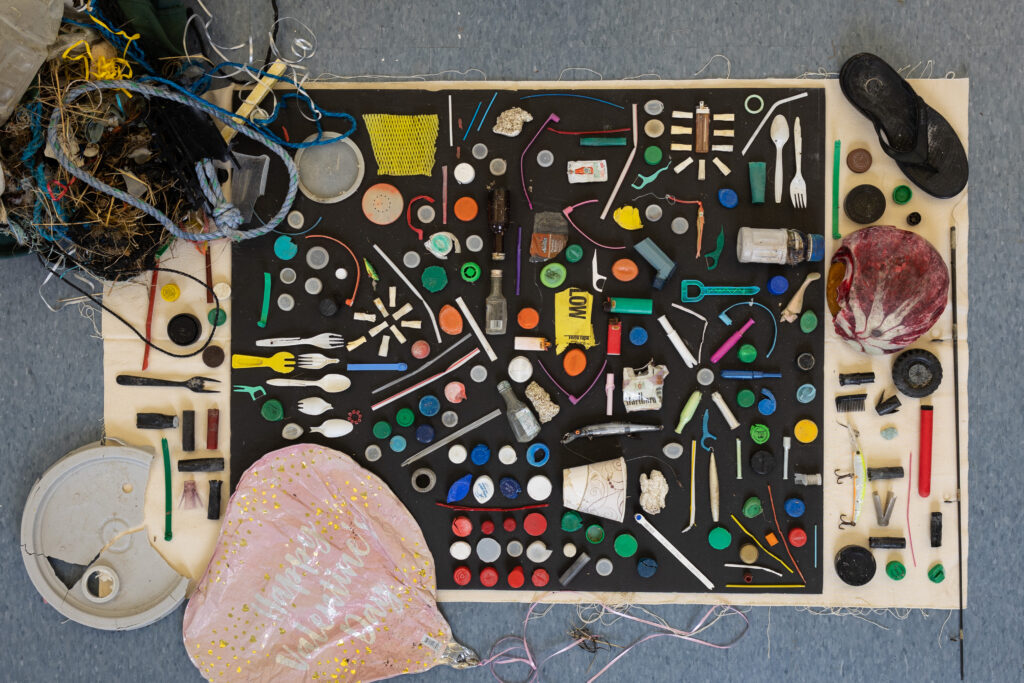
A few days later, I helped Michele collect about 100 pounds of trash on a beach further up the coast. We returned the very next day to the same stretch of sand and gathered nearly 150 pounds more. Even then, after hours of picking up garbage and with no space left in our bags, we left a lot behind.
“It’s so hard, it’s so hard [to stop] when you’re passing stuff and you’re like ‘there actually is no room left in these big sacks,’” Michele says. “It makes me nuts.”
Despite the weight, much of the garbage Michele finds are tiny plastics: balloon strings, bottle caps, lighters, indistinguishable objects broken down into tiny bits of assorted colors, and countless styrofoam beads strewn about the sand and brush. It all accumulates into synthetic rainbows piled high like monuments to our love affair with polymers.
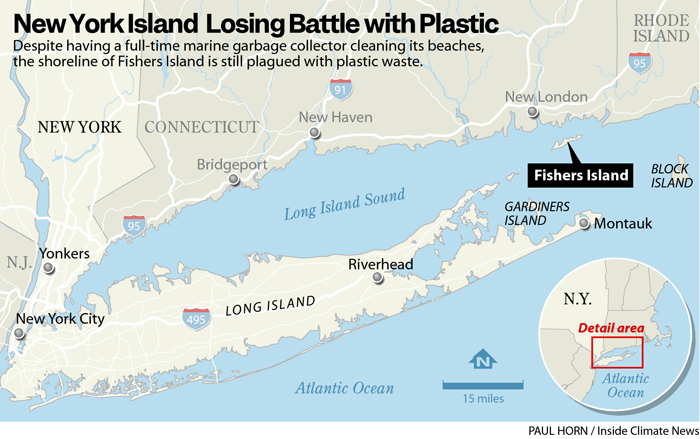
Michele scours the beach on her hands and knees picking up all the small bits because they’re easy to overlook, but incredibly detrimental to the natural environment.
Small bits of plastic are easily ingested by wildlife and wreak havoc on habitats.
“A lot of fish and birds, they may be actually looking for certain [foods] that are, you know, white and buoyant, and a lot of plastic would fit this and look like fish eggs, say rising at the surface,” said Syma Ebbin, a professor at the University of Connecticut and researcher with Connecticut Sea Grant. Even scientists can confuse tiny bits of plastic with organic matter, she added.
“[Plastic] can also act as a vector for [disease and chemical] contaminants that could then bio accumulate in the organisms that are ingesting them,” Ebbin said.
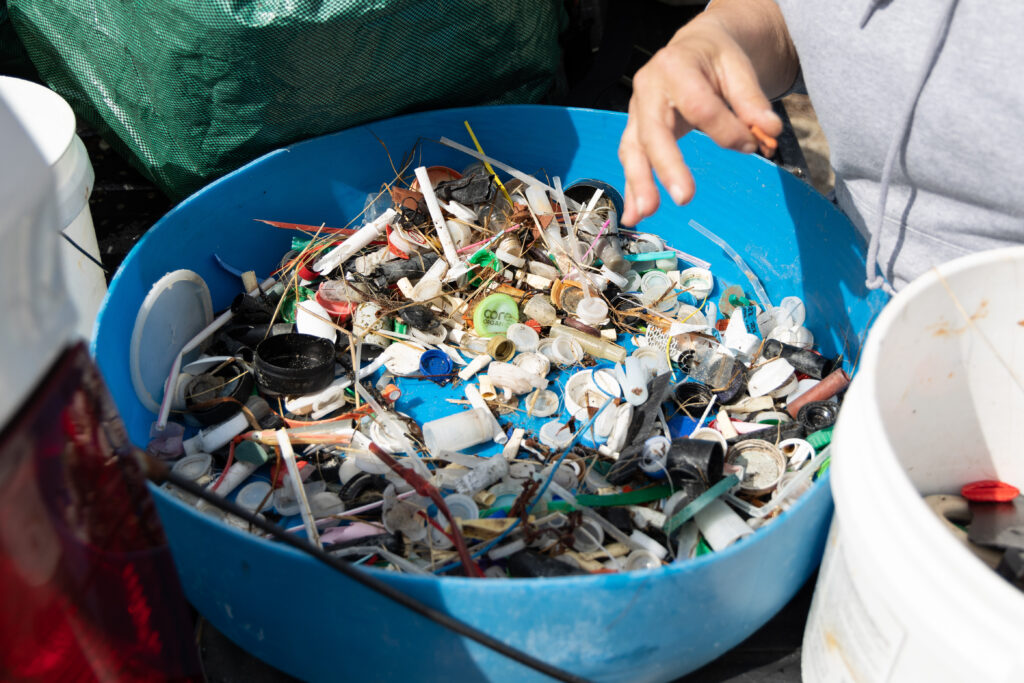
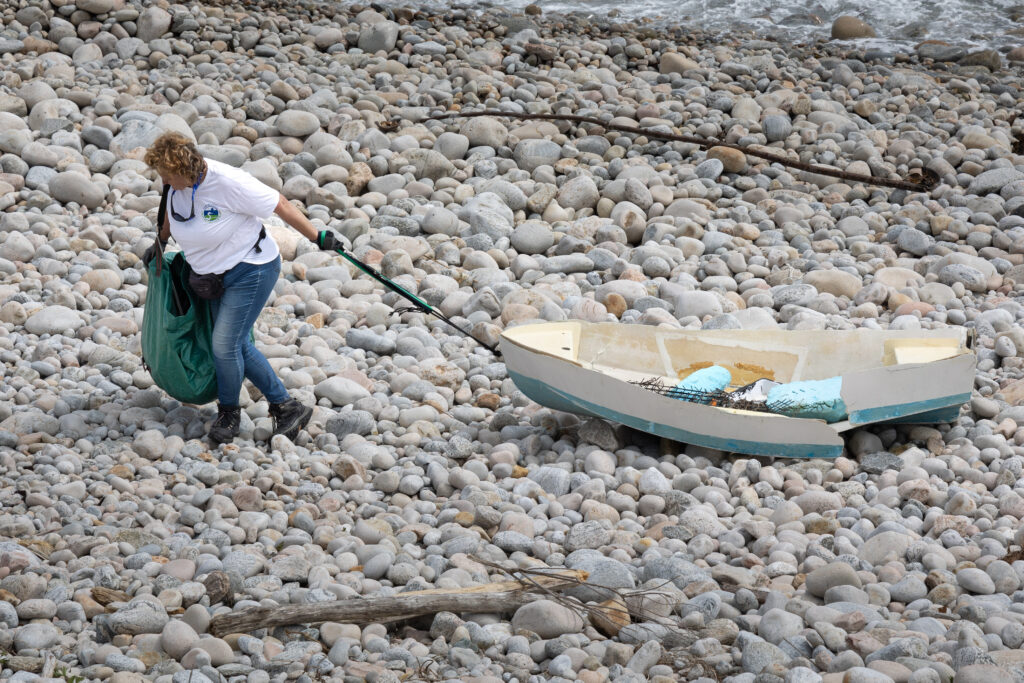
Marine waste is not unique to Fisher’s Island. But the island serves as a haven for rare and threatened plants and wildlife, making the effects of all that garbage particularly worrisome.
Fisher’s holds nearly unscathed expanses of habitat offering a natural refuge for many species away from busier shores in the Northeast. Its waters host a substantial amount of the remaining seagrass that has declined from much of the Long Island Sound; an abundance of bird species nest around the island, including the threatened Piping Plover and formerly endangered Osprey.
Part of that is thanks to Michele, but possibly the largest factor has to do with the wealth present on the island.
Much of Fisher’s Island is gated, with multi-million dollar summer homes that are occupied just a few weeks or months each year. It’s nearly vacant outside of the summer season, when a few thousand people fill the island. The last census pegged the year-round population at just 58, although many residents place the number somewhere over 200. That year-round population keeps the island functioning, with many serving as caretakers for mansions.

Unlike other havens for the affluent like nearby Martha’s Vineyard or the Hamptons, many seasonal residents endeavor to keep tourists out and preserve the island as a relative secret.
There are no attractions for those who don’t have a home on Fisher’s Island—no hotels, no year-round cafes or restaurants, just one small market with spotty hours, and a top-rated golf course tucked into the access-controlled east end of the island. According to year-rounders, the summer residents hold tight control over the island and its doings.
That isolation crafted the beauty that drew Michele to the island decades ago. And it prompted her to begin picking up beach garbage.
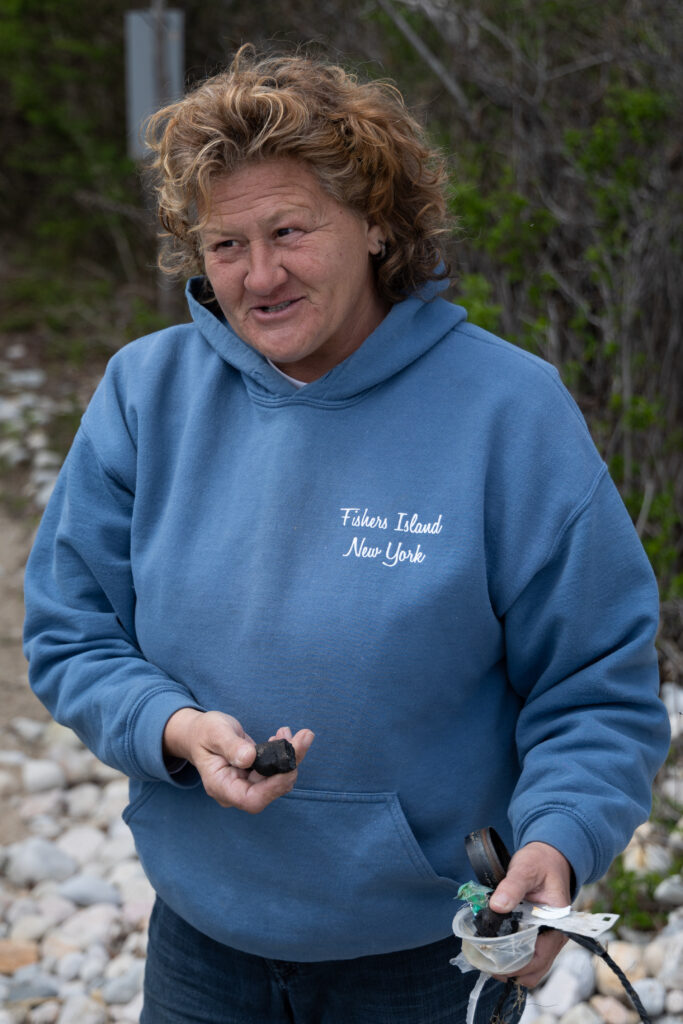
“I do it because the first time I came here, this place was my soul. It’s so untouched,” she said. “There’s no McDonald’s, no Dunkin Donuts, none of that here, no stoplights. It’s just so preserved and natural. And when I saw how much garbage was on the shoreline, I couldn’t help but pick it up. And then I couldn’t stop seeing it,” she says.
The island’s exclusivity has made for excellent wildlife habitat, and the year-round residents love the beauty and isolation. But Fisher’s also shows the flipside of environmental injustice—while poverty can correlate to poor environmental conditions, wealth can create green safe havens reserved for the elite.
Even Michele is a symbol of the disparity. For many places, collecting beach trash is a volunteer job and it’s certainly not full-time or year-round. The Island’s seasonal residents are capable of funding a healthy conservancy, which had assets exceeding $1 million in 2020 according to ProPublica, and bankrolling important jobs like the one Michele fulfills. The same level of financial investment to environmental safeguarding is not likely available to most communities.
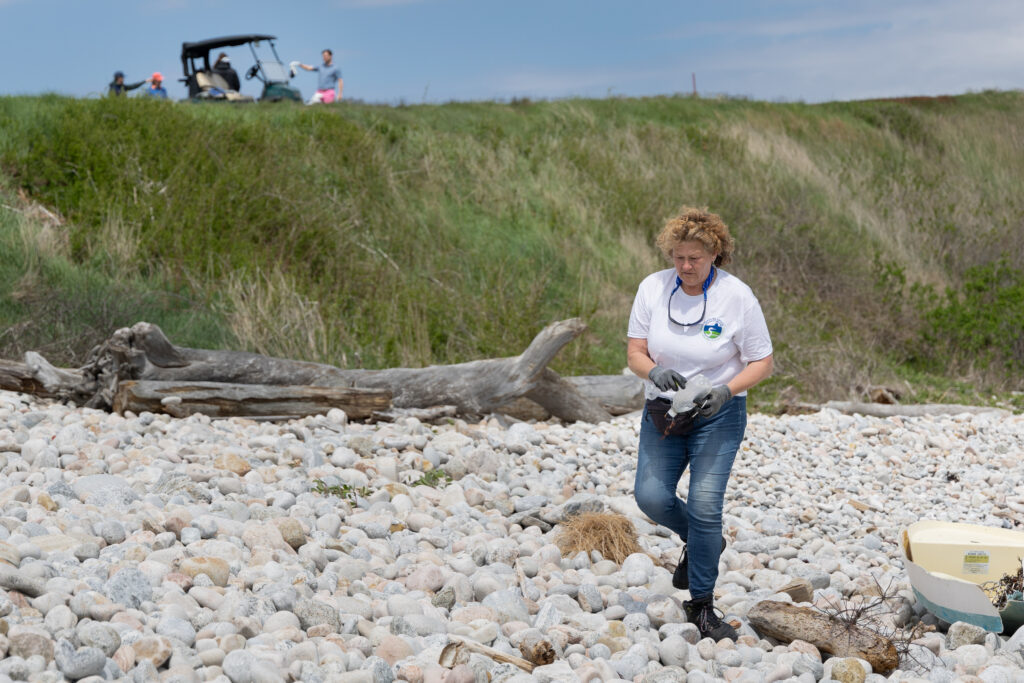
So the fact that the island serves as a sanctuary for critical ecosystems is good and needed, but the wealth inequity that makes that possible is ultimately unsustainable if the end goal is reversing environmental degradation.
Wealth can also fund pricey climate adaptation measures to protect the world’s top earners, even as they are responsible for the lion’s share of the activities driving climate change.
Keep Environmental Journalism Alive
ICN provides award-winning climate coverage free of charge and advertising. We rely on donations from readers like you to keep going.
At the global scale, the United Nations projects climate adaptation measures for developing nations to soon cost hundreds of billions of dollars a year. But the climate adaptation funds meant to assist those nations are woefully underfunded; the largest of which, the Green Climate Fund, has just over $12 billion in committed funding since its 2010 inception.
Wealthier nations are better suited to foot the bill. The Biden administration’s infrastructure bill includes tens of billions in funding for climate resiliency projects. To counter sea-level rise and storm surges in parts of Manhattan, New York City’s East Side Coastal Resiliency project is expected to cost $1.45 billion, over 10 percent of what’s currently in the Green Climate Fund for developing nations.
For Michele, the solution to Fisher’s Island’s garbage problem is simple.
“Single use plastic has got to be abolished,” she says. “I don’t need to read your label for the next 20 years because it’s stuck in brush and coated in plastic.”
Syma Ebbin echoes Michele’s sentiment, and sees recycling as part of what’s responsible for the garbage on the Fisher’s Island shoreline.
“Reducing that stream of single use plastic is critically important,” according to Syma. “I think we have to get beyond this idea that recycling is really a helpful thing…unfortunately [the idea of recycling] makes people feel like they’re okay to use single-use plastic.”
